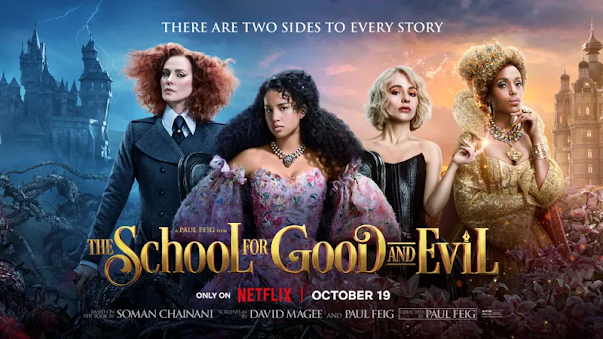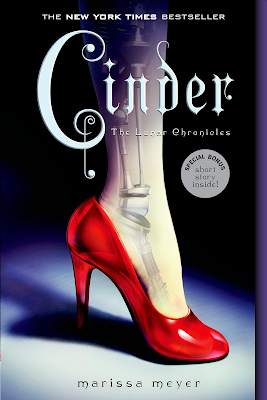Review: The Beast and the Beauty
The Beast and the Beauty follows up Till Midnight as the second book in Aya Ling's Reversed Retellings series, which reverses the gender roles from well-known fairy tales. This book was her take on the story of "Beauty and the Beast" with a male beauty and a female beast. Though Gail Carson Levine did something similar to this with Ogre Enchanted, The Beast and the Beauty is more of a direct translation of the romantic elements of the original story, giving the reader a better opportunity to look at how the dynamics of the characters change when their genders are reversed. A conventionally beautiful man has different problems than a conventionally beautiful woman, and the same applies to a grotesque or deformed man vs. a grotesque or deformed woman. I thought this was a very clever take on the story while still staying true to the most beloved elements of it.
The Beast and the Beauty is the story of Lady Sybil de la Roche, a rich debutant who was cursed by a wicked sorceress who was jealous of her striking beauty. Unlike her beasty counterpart from prior "Beauty and the Beast" adaptations, Sybil is quite mild-mannered, and her demonic appearance is not meant to be a reflection of her cruelty to the enchantress. She is also immortal during the curse along with everyone living at her manor, so there is a very significant age difference between her and Prince Gerald when he finds her. In that respect, is similar to a vampire romance story, something that has also been explored in prior adaptations of this fairy tale. Sybil's loyal servants do everything they can to hide her deformities in the hopes that she will find a suitor to end the curse, but it always goes horribly wrong when they learn the truth. As a result, Sybil grows extremely cynical over the years and comes to the conclusion that all men are superficial, something that many women in the real world are unfortunately taught from a young age.
Prince Gerald, the "beauty" of the story, was introduced as one of the twelve princes in the prequel novel Till Midnight. He is a quiet intellectual who wears spectacles and loves to read just like many modern iterations of Belle. However, he also receives a lot of unwanted attention as a man for having striking blonde hair, blue eyes, and delicate facial feature. He is often chastised for looking too effeminate, a fate that is also shared by Martin, a character from another Aya Ling novel, A Little Mermaid. The conventional charms that women try to use on him have no effect because his interests lie solely in matters of the mind. Gerald is very humble and does his best to try to blend into the background as much as he can for someone with such a striking appearance. When he breaks into Sybil's manor to find shelter during a freak storm, he is more than willing to pitch in to help the servants repair the damage he caused.
The love story in this book is a touching tale of acceptance toward both oneself and one's partner. The message is even more poignant when women are conventionally expected to look pretty in order to find love more than men. It is made clear many times that Gerald only wants to break the curse for Sybil's sake because she hates living in a body that is not hers in a state where time is frozen. For the first half of the book, she refuses to reveal her identity to Gerald. She disguises herself as a maid named Alma and covers her face with a veil. Even though Gerald tells her multiple times that he values intelligence and wit over beauty, she cannot accept it to be true after the years of rejection she experienced prior to meeting him. Only after she is willing to let her guard down are they truly able to be together.
The Beast and the Beauty is everything you could possibly want from a gender-reversed adaptation of "Beauty and the Beast." It addresses all of the same themes as the original story in a more poignant manner by reversing conventional fairy tale roles and exploring the nature of love and superficiality. I loved how Sybil and Gerald were able to bond over their love of reading and that Sybil learned it was possible for someone to accept her the way she was after being repeatedly let down for so long. There was one pointless character death in the book that bothered me, but that was the only thing I didn't like. If you love romance, fairy tales, and challenging social norms, I suggest checking it out.
The Beast and the Beauty is the story of Lady Sybil de la Roche, a rich debutant who was cursed by a wicked sorceress who was jealous of her striking beauty. Unlike her beasty counterpart from prior "Beauty and the Beast" adaptations, Sybil is quite mild-mannered, and her demonic appearance is not meant to be a reflection of her cruelty to the enchantress. She is also immortal during the curse along with everyone living at her manor, so there is a very significant age difference between her and Prince Gerald when he finds her. In that respect, is similar to a vampire romance story, something that has also been explored in prior adaptations of this fairy tale. Sybil's loyal servants do everything they can to hide her deformities in the hopes that she will find a suitor to end the curse, but it always goes horribly wrong when they learn the truth. As a result, Sybil grows extremely cynical over the years and comes to the conclusion that all men are superficial, something that many women in the real world are unfortunately taught from a young age.
Prince Gerald, the "beauty" of the story, was introduced as one of the twelve princes in the prequel novel Till Midnight. He is a quiet intellectual who wears spectacles and loves to read just like many modern iterations of Belle. However, he also receives a lot of unwanted attention as a man for having striking blonde hair, blue eyes, and delicate facial feature. He is often chastised for looking too effeminate, a fate that is also shared by Martin, a character from another Aya Ling novel, A Little Mermaid. The conventional charms that women try to use on him have no effect because his interests lie solely in matters of the mind. Gerald is very humble and does his best to try to blend into the background as much as he can for someone with such a striking appearance. When he breaks into Sybil's manor to find shelter during a freak storm, he is more than willing to pitch in to help the servants repair the damage he caused.
The love story in this book is a touching tale of acceptance toward both oneself and one's partner. The message is even more poignant when women are conventionally expected to look pretty in order to find love more than men. It is made clear many times that Gerald only wants to break the curse for Sybil's sake because she hates living in a body that is not hers in a state where time is frozen. For the first half of the book, she refuses to reveal her identity to Gerald. She disguises herself as a maid named Alma and covers her face with a veil. Even though Gerald tells her multiple times that he values intelligence and wit over beauty, she cannot accept it to be true after the years of rejection she experienced prior to meeting him. Only after she is willing to let her guard down are they truly able to be together.
The Beast and the Beauty is everything you could possibly want from a gender-reversed adaptation of "Beauty and the Beast." It addresses all of the same themes as the original story in a more poignant manner by reversing conventional fairy tale roles and exploring the nature of love and superficiality. I loved how Sybil and Gerald were able to bond over their love of reading and that Sybil learned it was possible for someone to accept her the way she was after being repeatedly let down for so long. There was one pointless character death in the book that bothered me, but that was the only thing I didn't like. If you love romance, fairy tales, and challenging social norms, I suggest checking it out.












Comments